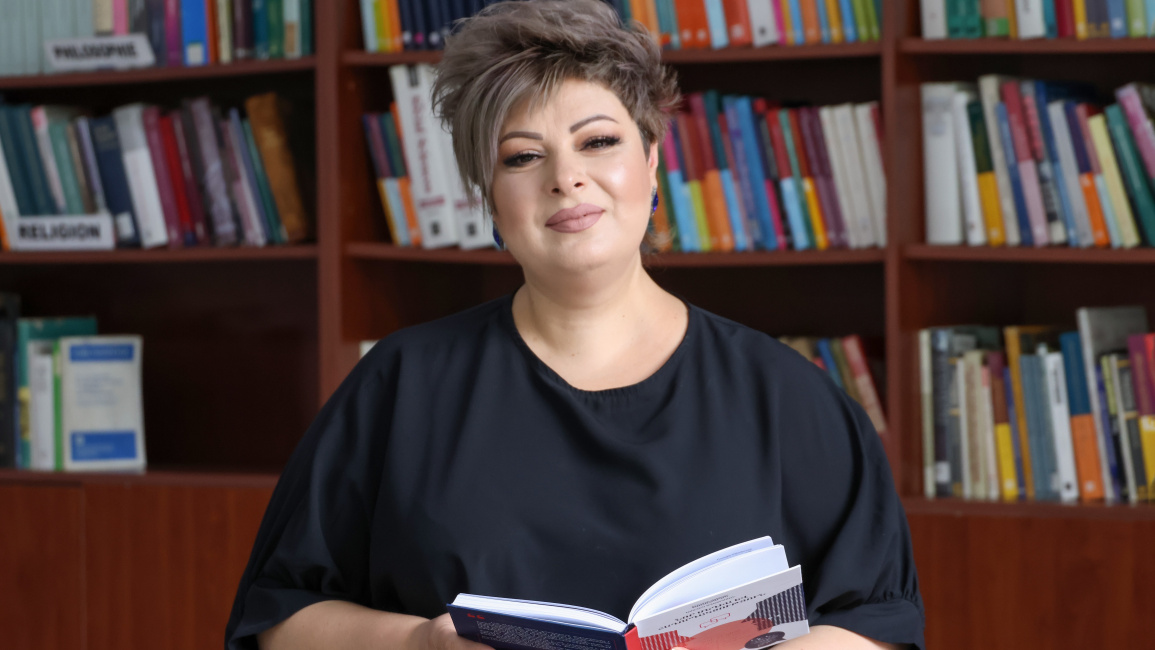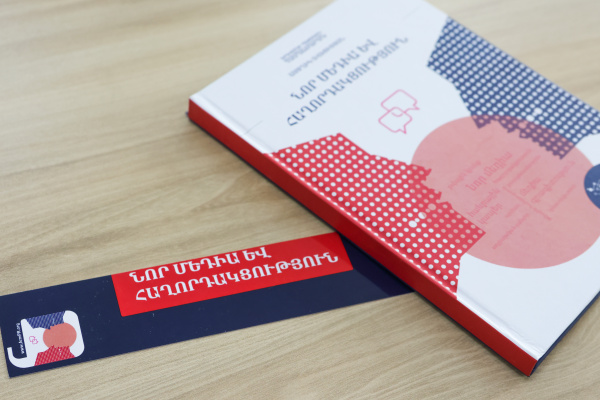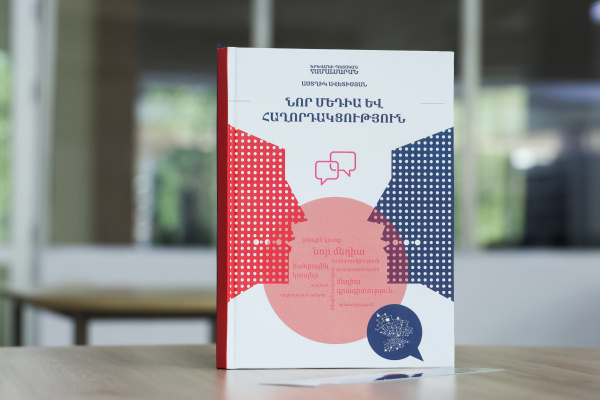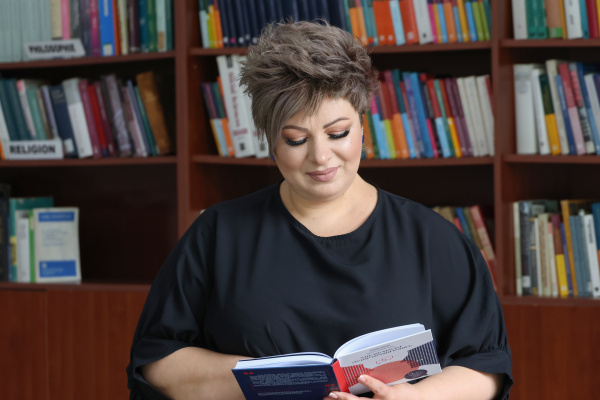July 12, 2024 | 11:06
Science
Education
New media has transformed the anatomy of communication, YSU Associate Professor Astghik Avetisyan says
Astghik Avetisyan, Candidate of Philological Sciences, Associate Professor in the Chair of Print and Broadcast Media at the YSU Faculty of Journalism, and President of the Armenian PR Association, published a book titled "New Media and Communication," supported by the YSU Academic Council. This scientific monograph covers trends and innovations in new media and communication, key theories of modern media, the opportunities provided by digital platforms, innovative approaches, and analyses of key concepts and knowledge.

The Internet has changed people's daily lives, perceptions and understandings, ushering in new technologies and innovations that have thrown traditional habits into oblivion. In her book, Astghik Avetisyan touched upon the development of digital technologies, which have also changed the nature of the media, offering a detailed examination of each of these transformations.
We talked to the author about the relevance of topics covered in the book, the transformations in new media, her experience and upcoming plans.

- Ms. Avetisyan, what motivated you to create this book, and how relevant are the topics covered?
- Having studied communication and new media for many years, I realized that new media has a great influence on all areas of our lives. I started studying and researching various scientific sources and social platforms created as a result of the development of information technology. I sought to understand how new media has influenced the fields of science, economy, education, and art, and how it has transformed communication itself. We live in a world where technological opportunities and the latest technologies are evolving every day. If before people's communication was problematic, now we transfer information, receive and communicate within seconds. Anyone can search for the questions they are interested in and get comprehensive answers. The flow of information presents society with significant challenges, and the variety of information brings the need to be media literate, discern accurate information from misinformation, identify reliable sources, and distinguish whether the information received is true or generated by "mushroom" websites. All these phenomena have been the core of my studies for 5 years. The results of my studies have been published in scientific articles and are included in this book.
"New media is transforming the anatomy of communication…" (A. Avetisyan, New Media and Communication)
- What topics does the book cover?
- The monograph covers a wide range of topics, from the evolution of communication to the profound impact of new media. Comprising 10 chapters, the book meticulously explores emerging phenomena, examining how media influences politics, science, creative industries, the arts, digital activism, and education. Today, technology allows us to experience realities where we have never been and see a work of art that is, for example, in a remote corner of the United States. By following the content, we can see how media has affected the network economy and reshaped the entire context. In the monograph, special attention was paid to the impact of new platforms of cultural, psychological and anthropological nature of communication on public life.

"New media has fundamentally changed life impacting nearly every aspect of modern human life…" (A. Avetisyan, New Media and Communication)
- What purposes does the book serve, and who is its intended audience?
- With the global spread of new media and the impact of globalization, we observe the interpenetration of new formats in journalistic genres, which transform the essence of political, scientific, educational and cultural processes. The book addresses challenges in organizing and managing media and communication. The book creates opportunities to "enter" and "navigate" where possible. It surely serves as a motivation for professionals who want to create new content in every situation. The book can be useful for specialists, researchers, professors and students.
"New media has completely transformed the formats and models of economic development, contributed to the dissemination of information and the formation of network thinking..." (A. Avetisyan, New Media and Communication)
- In the past, journalists and media professionals were the primary disseminators of information, but today, with the advancement of technology, we see diverse individuals taking on this role. How not to "get lost" in information flows?
- Yes, today, anyone can become a "media" and disseminate information, share opinions, and influence audiences. This has blurred the boundaries of traditional journalism, leading to the rise of untrained individuals as opinion leaders in the information field. This poses a significant challenge for the new generation: determining whom to trust and which information is reliable. Today there are many challenges, and if we are not careful and "go" after any information, we can "drow" in this information overload. This is a very complex and worrisome issue. Currently, we also have the problem of maintaining media hygiene, since even many experienced professionals, following the demands of the mass of society, deliver low-quality content. However, I am sure that this problem will be solved over time; those who can hold their professional benchmark high win, and those professionals who uphold professional principles will always be respected. Today, people's demands have changed and if experienced media professionals provide quality content, people will no longer go after "fast food" information.
"Whereas in the past only journalists transmitted news, today anyone can participate in the information dissemination process, including bloggers and ordinary social media users…" (A. Avetisyan, New Media and Communication)
- As you mentioned, the development of technologies is continuously changing the nature of media. Given this ongoing evolution, what do you foresee as the next technological breakthrough?

- I think that smartphones, now an integral part of our lives, may eventually evolve into, for example, badges with even greater control capabilities (despite the existence of smartwatches, which already allow us to control various things). Due to ongoing technological advancements, a serious danger may arise. It's crucial that humans maintain control over artificial intelligence, rather than the reverse, to prevent potential outcomes where people become lazy, passive and disinterested. In this case, media will use smarter algorithms to create personalized content that is tailored to each user's preferences, increasing their engagement rate. Virtual and Augmented Reality (VR/AR) technologies will become more accessible and widely used in various media platforms, enhancing interactivity and user engagement. There will be a diversification of content, with users easily generating and distributing their own content through social networks, podcasts, and video platforms. Another opportunity is the development of data and analytics. Media companies will use the most accurate data analysis to understand audience needs and develop more effective media strategies, resulting in higher-quality content. Collectively, these developments will foster the development of greater media dynamics, innovation and engagement.
"Any technology acquires positive or negative qualities depending on the context in which it is applied..." (A. Avetisyan, New Media and Communication)
- Ms. Avetisyan, what are your upcoming plans?
- I am currently working on publishing a new book focused on new tools and technologies in public relations and communication. Additionally, I am preparing for the defense of my doctoral dissertation.
It is important to note that Astghik Avetisyan has authored 7 scientific and professional books, in addition to about 30 scientific articles.

